
Tales Of The Past: Brisbane Juvenile Graduates
Cover photo: Balmerino (Maurice Campbell) saluting in the 1976 QTC O'Shea Stakes. (Courtesy: The Pascoe Collection)
By Ross Stanley
Numerous freshmen and sophomores have graduated from Brisbane with honours.
Some two-year-olds and a host of three-year-olds have prevailed against all ages in six elite events.
THE JAUNTY JUVENILES
With the Stradbroke Season drawing closer, it is worthwhile investigating the performances of the younger brigade in the Stradbroke Handicap, Brisbane Cup, Doomben 10,000, Doomben Cup, Kingsford Smith Cup and the Tattersall’s Tiara when they were staged at Group 1 or its equivalent level.
Early on, the six furlong Stradbroke was won by the two-year-olds Boreas in 1898, Sweetheart (1899), Spear Chief’s grand-dam Line Gun (1913) and Amberdown (1916), the top shelf colt that was runner up in the same event at three, humping 10.8. The bay, an idol at Albion Park, also managed to score on three occasions in Sydney.
Among the eight Eagle Farm hits registered by the Downshire (GB) entire was the QTC Claret Stakes, the important mile race for two-year-olds that has morphed into today’s J.J. Atkins Stakes.
Fitz Grafton’s feats for the Ipswich-based McGill family were unique. He won the 1903 Claret Stakes and the 1903 Stradbroke at two while his trophy collection at three encompassed the Queensland Guineas, Derby, St Leger and the Brisbane Cup, a staying prize that he also picked up the following year. Two prestigious Viceroy Cups in India were the last of Fitz Grafton’s 13 Principal victories.
Wiggle, the pocket-sized coltish filly by Rego, was a fabulous dance partner for Bill Camer, the Sydney hoop whose original stamping ground was the Ayr-Townsville district.
The duo “swayed” past their juvenile rivals five times with the 1958 AJC Champagne Stakes at 7/1 on and the BATC T.M. Ahern Stakes topping the bill until they whipped the cream of Australasia’s sprinters in the 1958 QTC Stradbroke.
After being ineligible for Skyline’s STC Golden Slipper, presumably because her dam had not been nominated in what was then a “Mare’s Produce” event, Wiggle exacted a type of revenge on the colt in the AJC Hobartville Stakes for three-year-olds.
In the following season, she scored eight times including the VATC Caulfield Guineas, VRC Edward Manifold Stakes, Linlithgow Stakes, C.M. Lloyd Stakes and the MVRC Alister Clark Stakes (10f, all ages).
Six more wins were recorded in the USA. Her son Sir Wiggle won four times in America and is on the pedigree page of King Keitel (2001 Doomben Cup).
In the sections below, the relevant year of a horse’s Brisbane success and its other key victories are shown in parentheses after the thoroughbred’s name.
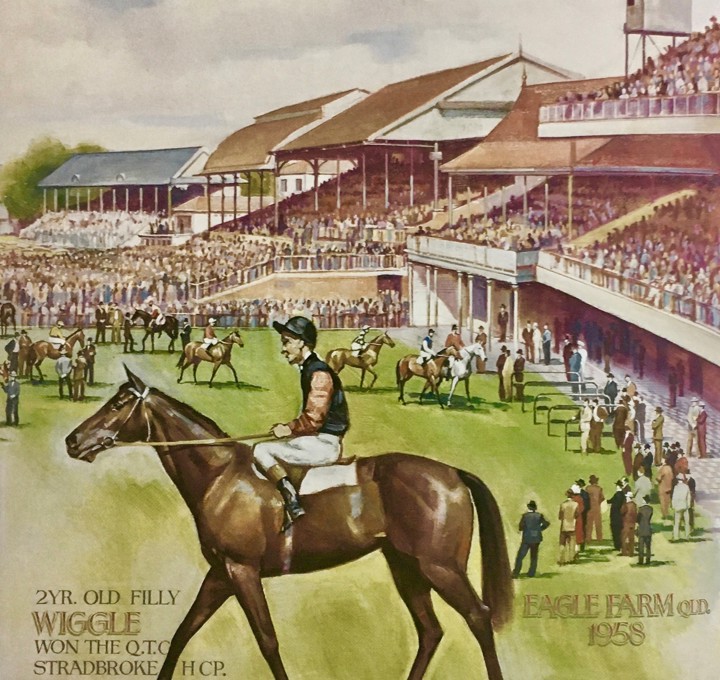
THE THREE-YEAR-OLD SPRINTERS
The second running of the QTC Stradbroke Handicap in 1891 saw Dan O’Connell, a brown gelding by Archie, taste success. Twenty-one aspirants faced the flag. Equine misbehaviours held up the despatch for 45 minutes.
The Queenslander (May 30, 1891) reported that the multi-skilled Dan O’Connell backed up a few races later but failed, by a short neck, to claim the red riband associated with the St Leger Stakes (14-and-a-half furlongs).
In the first quarter of the new century, the sophomores Jessie’s Dream (1907), Bright Laddie (1910), Lady Hope (1911), Malt Mark (1914), Sydney Damsel (1917,1920 AJC Doncaster), Gold Tie (1918 and 1919 Stradbrokes, 1929 VATC Futurity Stakes), Syceonelle (1921,1920 Queensland Guineas, 1921 QTC Moreton Handicap, QTC National Plate), Laneffe (1922) and Lady Aura (1923,1921 AJC Gimcrack Stakes) outgunned their Stradbroke opponents.
Highland (1925 and 1926) prospered further after the Victorian enthusiast Rita Buxton bought the Queensland product. The Highfield gelding secured the 1928 October (now Turnbull) Stakes,1928 Cox Plate, Underwood Stakes at Williamstown, 1928-29 VRC Cantala Stakes, 1929 VATC Memsie Stakes and the Toorak Handicap.
The flag was next flown by Will Yet (1930), Lady Linden (1931, 1932 VRC Newmarket, 1932 Tattersall’s Cup,1931 and 1933 QTC Ascot Handicaps), King Merlin (1937),Thurles Lad (1938, 1938 AJC The Shorts) and the wonderful Creeker Lucky Ring (1949-1950 Stradbroke, second in the 1949 10,000 and 1951 Stradbroke), Suncup (1953, the first seven furlong Stradbroke) and Knave (1956).
Persian Lyric (1961) led home his stellar contemporaries Tulloch in the 1961 AJC Invitational Stakes (2400m), Sky High in the AJC Derby and Wenona Girl in the Canterbury Guineas. These outcomes reflected his status in the upper echelon in the early 1960s. The game chestnut also took the honours in the 1960 QTC Derby but he couldn’t overcome High Society’s massive weight pull in the 1961 Tattersall’s and Doomben Cups.
Next along were Kilshery (1962, 1961 STC Canterbury Guineas,1962-63 AJC All Aged Stakes,1963 VATC Oakleigh Plate) and Cele’s Image (1964,1963 AJC Warwick Stakes and dam of Imagele, a distinguished galloper during the early 1970s).
Winfreux, the goose-necked Victorian, burst on the scene in 1965, with a QTC Welter win, the Stradbroke-Doomben 10,000 double and a second in the Doomben Cup. The result of the mating of Affreux and Winlam franked the form in the spring by saluting in the MVRC Feehan Stakes and the VATC Caulfield Stakes before missing the ultra thrill in the Cox Plate by a mere head.
The bay swept up the 1966 Tattersall’s Cup, Doomben Cup and QTC Barnes Stakes during his second sojourn in Brisbane while the third trip packed away another Tattersall’s Cup, another Barnes Stakes and the 1967 Exhibition Handicap.
Winfreux’s 27 wins embraced 21 stakes events that incorporated two more Caulfield Stakes, a VRC Mackinnon Stakes, MVRC Freeway Stakes, William Reid Stakes, VATC Orr Stakes, STC Hill Stakes and an AJC Craven Plate.
Mister Hush was Queensland-bred, raced, trained and ridden in the postponed 1967 edition. The Rush gelding struck in Lightnings at Eagle Farm in 1969-70 and Flemington in 1969. He was placed in the 1971 QTC Lightning, the 1970 Doomben 10,000, VRC Lightning and VRC Newmarket.
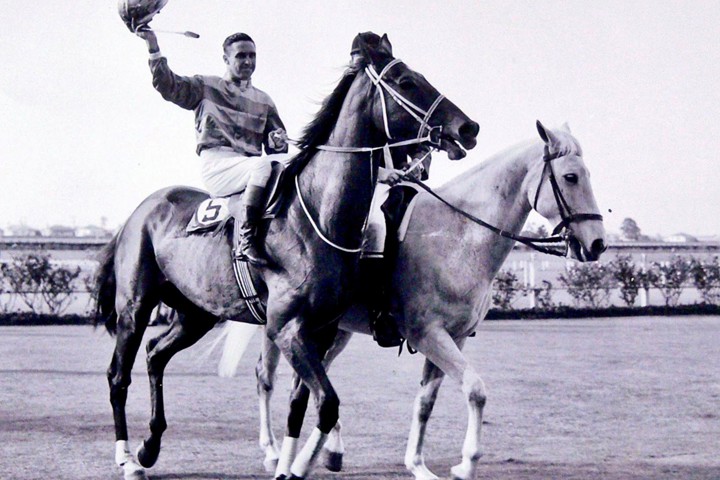
Divide and Rule’s (1970) other main conquests were the 1969 AJC Derby and the 1970 Doomben Cup. The Alcimede’s gelding hit the mark in the USA in races such as the Lakeside Handicap.
Next to stand up to be counted were Imposing (1979, 1979 AJC Epsom, George Main Stakes and STC Hill Stakes), Bemboka Yacht (1980 when Ducatoon, the first horse past the post, was disqualified), Daybreak Lover (1984 and 1986 after time at stud, 1983 STC Todman Slipper Trial, 1985-86 QTC Lightnings), Canterbury Belle (1985, 1984 CJC One Thousand Guineas and six other stakes events in New Zealand), Never Undercharge (1993, 1993 MVRC Manikato Stakes, SAJC Angus Brut Classic).
The Danehill filly Dane Ripper’s 1997 success was very highly ranked. She added that year’s equivalent of the Tatt’s Tiara and the MVRC Cox Plate to her credits as well as the 1998 Manikato Stakes, VRC Australian Cup and VATC Memsie Stakes.
Private Steer (2003) accrued 10 black-type titles with majors in the 2004 AJC Doncaster, All Aged Stakes, Warwick Stakes and Apollo Stakes. Semipalantinsk’s grand-daughter ran second in the 2003 Doomben 10,000.
La Montanga (2006, 2006 BTC Classic), Sniper’s Bullet (2007, 2009 WATC Kingston Town Classic, Railway Stakes), Sincero (2011,2011 ATC George Main Stakes, 2012 MRC Memsie Stakes) and Impending (2017, 2018 BRC Kingsford-Smith Cup, 2018 BRC Victory Stakes, 2016 ATC Stan Fox Stakes) kept up the momentum for this century.
Stefi Magnetica, after showing promise in the autumn when edged out in the ATC Surround Stakes by the 2023 ATC Flight Stakes winner Tropical Squall, picked up the gauntlet again in 2024. Her dam Mid Summer Music was fully on song in the 2012 Stradbroke.
The Doomben 10,000 traces back to the Newmarket Handicap that was the centrepiece on opening day for the course in 1933.
The straight six event was taken out by the three-year-old Wollun. Pamelus (1933, 1937 MVRC William Reid Stakes, VRC C M Lloyd Stakes,1938 Oakleigh Plate) and The Image (1943) did likewise.
The first sophomore to score after the purse was lifted to £10,000 was Ungar (1949,1948 VRC Sires Produce Stakes,1949 Orr Stakes,1949 VATC Victoria Handicap,1950-51 VRC Standish Handicaps).
Coniston (1951, 1950 QTC Sires Produce Stakes, Tatt’s Healy Stakes, 1952 Ascot Handicap, 1953 QTC Lightning), Highlea (1952), Apple Bay (1955, 1956 VRC Lightning Stakes), El Khobar (1956, 1956 QTC Ascot Handicap, AJC Warwick Stakes), Grey Ghost (1958, 1958 AJC Warwick Stakes, 1959 Stradbroke) and Second Earl (1959, 1959 QTC Lightning, Tatt’s Healy Stakes,1960 AJC George Main Stakes, short head second in Grey Ghost’s 1959 Stradbroke) were the cohorts 1950s contributors.
Only two of the category scored in the 1960s. They were Winfreux (1965) and Black Onyx (1969, 1968 AJC Sires Produce Stakes, 1970 Doomben 10,000, 1970 VRC Lightning-Newmarket double, 1971 VATC Orr Stakes, runner-up 1969 Doomben Cup). Following a bleeding problem, the grey was despatched to America. Assisted by legal drugs, he won six of his 15 stateside tasks.
The brilliant colt Baguette (1971 VRC Newmarket) came off a BATC Booroolong Handicap win to lift the 1971 10,000 trophy with the imperial equal of 58kg. Rego’s son was unbowed at two, harvesting Sydney’s Triple Crown and an open Welter. At age three, he also collected the AJC Hobartville Stakes, VRC Newmarket and the STC Railway Quality. At four, he took out the STC Canterbury Stakes and AJC George Main Stakes. Along the way, six top tier placings further underlined his ability.
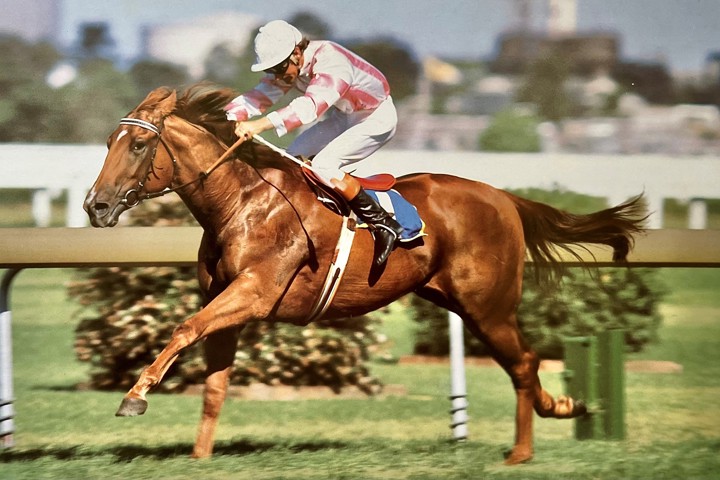
Bengalla Lad (1972) was too nippy for his fellow three-year-olds Charlton Boy and Amberdue. The Fred Best-trained galloper had only Triton in front of him in the 1972 Stradbroke and Lucky Cloud in the signature sprint’s 1973 renewal.
Craigola (1973) flourished with a lightweight and the services of apprentice Mick Dittman while Burwana (1976) made up for the dead heat for second registered by his sire Todwana in 1965. The bay, originally from Darby Hopkins’ Dalby yard, was saddled up by Sydney conditioner Kevin Hayes.
Gary Willetts had reasons to be concerned as he headed to the barrier in 1979 on Manikato. The well-established idol had not started for almost three months. Because he had been so unwell, the mission, with 58 kilograms, was almost aborted.
Although Casca (48kg) and Charmosa (47kg) were closing quickly on the favourite, Willetts did not pull the stick. He simply knew his mate was giving his utmost. The Victorians survived.
All 25 of Manikato’s black-type credits are now ranked as Group 1s.
In particular, Manihi’s son chalked up five William Reids, four Futurities (with one at 1800m), three Orr Stakes, two George Ryders and two Freeways. For good measure, throw in the Blue Diamond-Golden Slipper double, Caulfield Guineas and a sterling second to the rising star Dulcify in the 1979 Australian Cup (2000m).
The powerful, determined chestnut missed a place just five times in 47 runs. He overcame several physical hurdles and, in 2002 was inducted into Australian Racing’s Hall of Fame in its second year of operation.
Baguette’s son Hit It Benny (1980), Sovereign Red (1981, 1980 Caulfield Guineas, Victoria Derby, WATC Australian Derby, WATC Western Mail Stakes, 1981 VATC Underwood Stakes and VRC Craiglee Stakes), Ideal Planet (1982, 1982 Healy Stakes, Sired 1989 AJC Epsom winner From The Planet and 1995 Stradbroke victor Rouslan), Between Ourselves (1986 plus Healy Stakes) and Broad Reach (1987) were on target in the ‘80s.
All of Chief de Beers 20 victories were registered at Doomben. In the tally were the 1995 and 1998 BTC Doomben 10,000s,1996 BTC Foster’s Cup,1994 BATC Coca Cola Bottlers’ Classic, 1998 BTC Sprint and seven Listed affairs. The gelding by Hula Chief from Diamonds For Rosie also earnt place money 17 times including second berth in the 1994 QTC Sires Produce Stakes and third in the 1994 edition of what is now the J.J. Atkins Stakes.
The bay’s second career was with the Queensland Police force with ceremonial roles, crowd control duties and work in search, rescue and bush fire situations. He proved popular in his final chapter at Living Legends near Melbourne and, just days before his passing in 2020, the 28 year-old was awarded a prestigious Blue Cross Medal by the Australian War Animal Memorial Organisation, the body that recognises the devotion of animals serving their human mates.
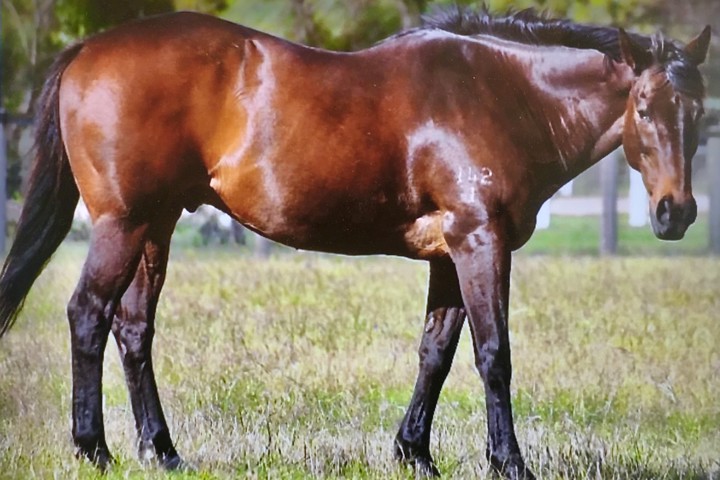
In 1997, there was a romantic twist for the 1990 Golden Slipper quinella pair Canny Lad and With Me. Their son, Accomplice, won the first non-handicap Doomben 10,000 and, in the autumn, The Galaxy at Randwick.
The somewhat underrated Darling Downs-based Laurie’s Lottery opened with four straight wins in a debut preparation that included a victory in Randwick’s 1998 Inglis Classic that deposited a $300,000 cheque and success in the STC Todman Slipper Trial. His fifth assignment produced a solid sixth at 7/2 in the Slipper final.
The Sir Laurence gelding maintained his sharpness with a first up second in the Up and Coming Stakes at Warwick Farm, wins in the AJC Roman Consul and STC Heritage Stakes and seconds in the AJC Stan Fox Stakes and the Caulfield Guineas.
Encouraging fourths in the MVRC Australia Stakes and the VATC C.F. Orr Stakes kicked off the sprinter’s second preparation as a three-year-old. Back at Doomben in May 1999, Laurie’s Lottery took out an Open Handicap over 1110m before trainer Michael Nolan and rider Michael Pelling combined in the 10,000 for a nose defeat of Adam, winner of the forthcoming Stradbroke.
Bel Esprit (2003) was a potent juvenile, garnering the 2002 MRC Blue Diamond plus its Preview and Prelude. At three, he was runner-up in the Manikato Stakes, Caulfield’s Dubai Cup, Caulfield Guineas and the VRC Newmarket. The stallion by Royal Academy sired the legendary Black Caviar.
After the lightly raced filly Sea Siren grabbed the 2012 BTC Cup, she continued on her merry way in the Doomben 10,000. Her spring sortie in Melbourne yielded the Manikato Stakes and second prize in the VRC Patinack Classic
Sea Siren’s swansong after 15 Australian appearances for the John O’Shea stable anchored second berth in the 2013 Doomben 10,000. She won the Belgrave Stakes in the Emerald Isle before her coupling with Galileo (Ire) created Warm Heart (Ire), a triple Group 1 heroine courtesy of the 2023 Yorkshire Oaks, Longchamps’ Prix Vermeille and Florida’s 2024 Pegasus World Cup.
Epaulette (2013, 2012 CRC Black Opal, ATC Golden Rose, placings in the 2012 Caulfield Guineas, 2013 ATC T. J. Smith Stakes), Mazu (2022) went into the 10,000 with four stakes wins on his resume while the 2022-2023 Australian Champion Sprinter Giga Kick (2023, 2023 ATC All Aged Stakes, won ATC The Everest in 2022 and was second in 2024). The chestnut by Scissor Kick has banked more than $12 million from 14 opportunities.
The Kingsford Smith Cup, a weight-for-age race since 1991 and a Group 1 challenge since 2006, has had a range of names since its infancy in 1964 as the BATC J. T. Delaney Quality. Duporth (2009) emulated the 1999 win in the event by his dam Staging. the 1999 winner. Sea Siren (2012) and Your Song (2013) were both by Fastnet Rock.
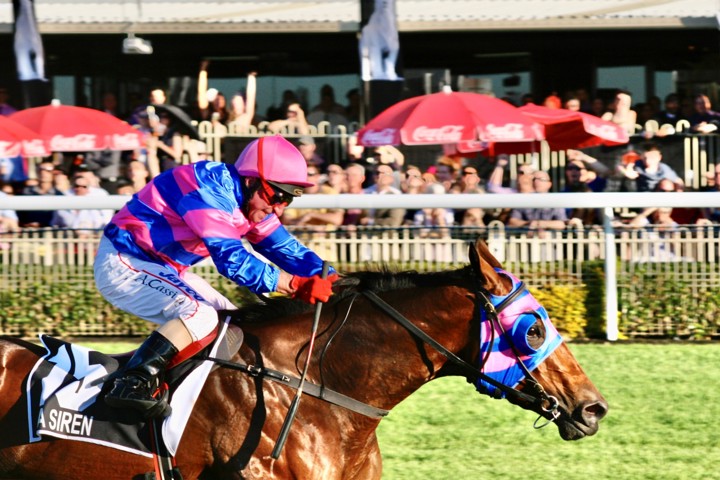
THE DISTAFF SPRINTERS
The Tattersall’s Tiara, the cleverly named end of season weight-for-age event (1400m) for fillies and mares, has been at Group 1 level since 2006.
The best of the three-year-old winners to date is Melito. The daughter of Redoute’s Choice, on top in the 2008 renewal, also took out the 2009 STC Silver Slipper Stakes, AJC Furious Stakes, 2010 AJC T.J. Smith Stakes and the 2011 ATC Apollo Stakes. Her seven placings at the elite level included her 2010 BTC Cup, Doomben 10,000 and Stradbroke efforts.
The 2008 victress Absolut Glam ran second in the BTC Sprint and fourth in the Stradbroke during her northern excursion. Three months later, the chestnut by Snowland was beaten a nose in the MVRC Manikato Stakes
Yosei (2011), ridden by Michelle Payne, was very capable with successes in the 2010 Sires Produce at Randwick and Caulfield’s One Thousand Guineas plus placings in the 2012 ATC Doncaster, MRC Toorak Handicap and Adelaide’s 2013 Sangster Stakes.
Cosmic Endeavour (2014) had won the BRC Dane Ripper Stakes at her previous outing. Northern Meteor’s daughter added the 2015 ATC Canterbury Stakes (Gr1) to her credentials. The Queensland Guineas winner Pear Tart (2012) and the Robert Heathcote-trained Startantes (2022) complete the list to date.
THE THREE YEAR OLD STAYERS
Eight three-year-olds secured a Brisbane Cup between 1866 and the end of that century. Since then, only ten more have joined the club.
The pioneer set in the category were North Australian in 1867, Wanderer (1873, 1873 AJC Doncaster), Irish Stew (1876), Strathearn (1878, a colt by The Barb dead-heated with another three-year-old in The Dean, the 1877 AJC Randwick Plate winner over three miles), Sydney (1879), Splendide (1892, 1891 QTC Derby, 1892 and 1895 QTC Queensland Cups), Tridentate (1893,1892 Queensland Derby, QTC Exhibition Handicap, 1896 Queensland Cup), and Dundonald (1889,1899 QTC Moreton Handicap).
The 1900s started off with Fitz Grafton (1904), Curve (1910,1909 QTC Brisbane Handicap), Goard (1912, 1912 Exhibition Handicap), Rosard (1913), Seremite (1923,1924 King’s Plate) and Piastoon (1926,1927 Sydney Cup,1926 QTC Metropolitan, QTC National Plate).
Spear Chief (1938), a black colt by Spearfelt, was outstanding. In 1937 he won the QTC Sires Produce Stakes, Queensland Guineas and the Derby. He also saluted in the 1938 VRC Hotham Handicap, AJC Cumberland Stakes and the QTC King’s Plate.
In the 1939 RRC Rawson Stakes with Maurice McCarten in the pigskin, the pairing (at 33/1) triggered a massive upset at the expense of Ajax (Harold Badger, 40/1 on). The champion by Heroic, looking to make it 19 straight, ended up with career figures of 46: 36-7-2. Spear Chief, with 9.7, made it back-to-back Brisbane Cups in 1939.
The Wash (1955,1954 QTC Derby) held the fort until the Kiwi Balmerino arrived in 1976. The Trictrac colt was magnificent in Australasia as a three- and four-year-old with a combined form line of 27:18-5-0. His homeland tally included Derbies at Auckland and Wellington and five Guineas events.
The bold bay scooped up the QTC Grand Prix, O’Shea Stakes and the Brisbane Cup at his only Queensland appearances. His southern haul included the 1976 STC Rawson Stakes and Tulloch Stakes.
In 1977, Dulcie’s son won at Hollywood Park in Los Angeles, twice at Goodwood in England, lost the coveted Grand Premio at Milan on protest, beat all bar Alleged in the Prix de l’Arc de Triomphe in Paris and was in the frame at Royal Ascot, Epsom and Sandown.
With the Cup’s downgrading in 2007, Queen’s Road (1982) is the last three-year-old to prevail with a Group 1 rating. The Sir Tristram filly was third in the Queensland Oaks and second in the VRC Oaks to Rose of Kingston (1982 AJC Derby).
The Doomben Cup, a handicap at its inception in 1933, was first run under the weight-for-age scale in 1990. It was always regarded as a Principal race by the Australian Stud Book and was assessed as a Group 1 competition when that classification system was introduced in 1980.
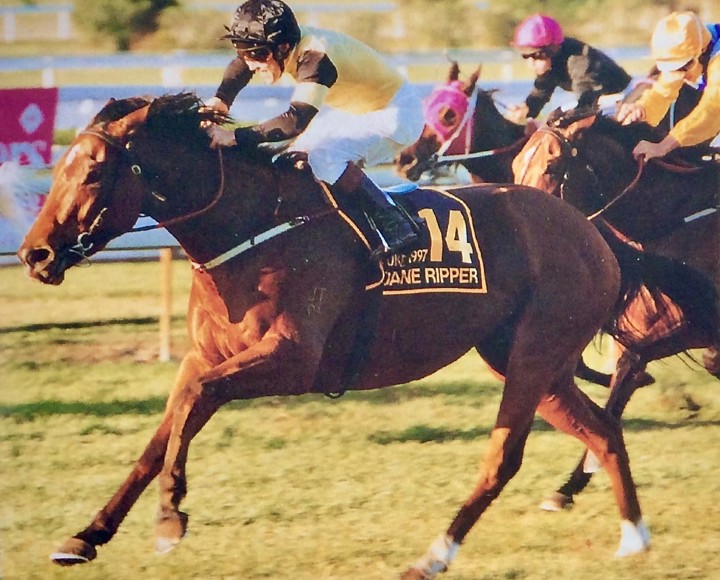
Beaulivre (NZ) was the ice-breaker for the sophomores in 1940. The Beau Pere colt had posted a dozen stakes wins, including the CJC New Zealand Derby, before crossing the Tasman.
The three-year-old conceded 13kg in a head loss to Expressman (George Moore) in the 1940 Newmarket over Doomben’s straight six course. A week later, with 57.5kg over five furlongs further in the Cup, Beaulivre won comfortably in track record time.
Also in 1940, the sprinter-miler that managed a middle distance accounted for the opposition in the Caulfield Cup and Sydney’s Warwick Stakes and Chelmsford Stakes.
Dark Marne (1947) was a fine stayer. The gelding was runner up with weight in 1948-49 Brisbane Cups and a lip shy of Melbourne Cup glory in 1948. Ironically, in the 1948 Sydney Cup, The Marne’s son had a split inch margin over Columnist. Other key successes were in the 1947 Hotham Handicap, 1948 AJC Colin Stephen Stakes and the 1949 O’Shea Stakes. The bay passed away in 1973, aged 30.
Forge (1948,1948 QTC Metropolitan,1949 Ipswich Cup), Dream (1950), Tossing (1952, STC Theo Marks Quality), French Echo (1953,1952 AJC Champagne Stakes), Earlwood (1959-60,1958 D. J. O’Mara Stakes, QTC Guineas, QTC Derby, BATC Summer Cup,1959 Tattersall’s Cup) carried the banner through to the 1960s.
The next newsmakers were Striking Force (1964,1965 Ipswich Cup,1965 AJC Metropolitan,1966-67 O’Shea Stakes), Winfreux (second on a sprinter’s preparation in 1965) and Cheyne Walk (1976, 1976 Australasian Spring Championship,1976 QTC Derby) and Marceau (1978, 1978-79 STC Rawson Stakes ,1978 STC Hill Stakes).
Subsequently, there has been just a sprinkling of standard bearers. Dandy Andy (1987,1988 VRC Australian Cup) was followed by the talented Danewin (1995). He put together 11 black-type hits that included the 1994 Spring Champion Stakes,1995 Rosehill Guineas, Mackinnon Stakes and Caulfield Stakes, Furthermore, he was successful at stud, most notably through the accomplishments of Theseo, County Tyrone, Toulouse Lautrec, Vitesse Dane and Excites.
Given that six of the last nine entries on the Doomben Cup honour roll have been imports from the Northern Hemisphere, it is not surprising that Akhenaton (2000) , a grey by Snippets, is the most recent three-year-old to take out a Doomben Cup.
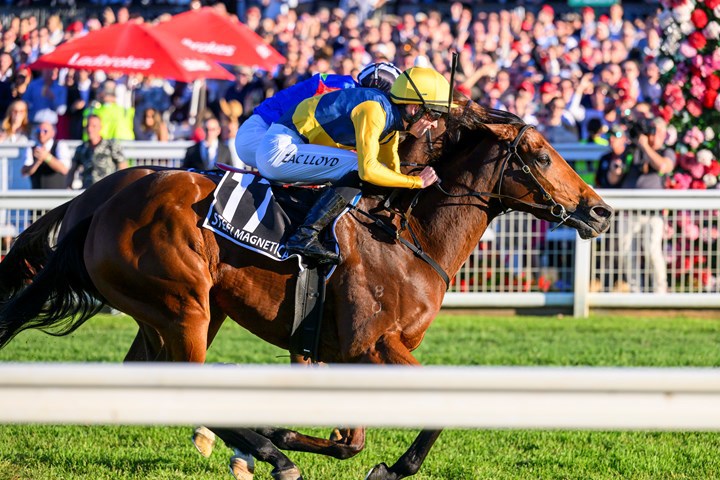
SUMMING UP
It seems safe to say that the prospects of three-year-olds in the five remaining Group 1 offerings in Brisbane in 2025 should not be hastily discounted.
During the lengthy time span covered by the above survey, there have been huge changes in race conditions and scheduling, priorities of owners, breeders and the authorities and prize money trends. However, there has still been a number of sophomores capable of vanquishing their older opponents.
As always, many contenders have blossomed in the south after their winter time in Queensland. Profitable punters over the decades have kept tabs on potential candidates. There are more to come.










